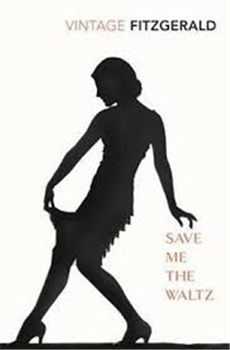Description
One of the great literary curios of the twentieth century, Save Me the Waltz is the first and only novel by the wife of F. Scott Fitzgerald. During the years when Fitzgerald was working on Tender is the Night, which many critics consider to be his masterpiece, Zelda Fitzgerald was preparing her own story, which strangely parallels the narrative of her husband, throwing a fascinating light on F. Scott Fitzgerald's life and work. In its own right, Save Me the Waltz is a vivid and moving story: the confessional of a famous glamour girl of the affluent 1920s and an aspiring ballerina which captures the spirit of an era.
About the Author
Zelda Sayre Fitzgerald, born Zelda Sayre, was a novelist and the wife of writerF. Scott Fitzgerald. She was an icon of the 1920s—dubbed by her husband "the first American Flapper". After the success of his first novelThis Side of Paradise(1920), the Fitzgeralds became celebrities. The newspapers of New York saw them as embodiments of the Jazz Age and the Roaring Twenties: young, rich, beautiful, and energetic.Zelda Sayre grew up in a wealthy and prim southern family. Even as a child her audacious behavior was the subject of Montgomery gossip. Shortly after finishing high school, she met F. Scott Fitzgerald at a dance. A whirlwind courtship ensued. Though he had professed his infatuation, she continued seeing other men. Despite fights and a prolonged break-up, they married in 1920, and spent the early part of the decade as literary celebrities in New York. Later in the 1920s, they moved to Europe, recast as famous expatriates of the Lost Generation. While Scott received acclaim forThe Great Gatsbyand his short stories, and the couple socialized with literary luminaries like Ernest Hemingway, their marriage was a tangle of jealousy, resentment and acrimony. Scott used their relationship as material in his novels, even lifting snippets from Zelda's diary and assigning them to his fictional heroines. Seeking an artistic identity of her own, Zelda wrote magazine articles and short stories, and at 27 became obsessed with a career as a ballerina, practicing to exhaustion.The strain of her tempestuous marriage, Scott's increasing alcoholism, and her growing instability presaged Zelda's admittance to a sanatorium in 1930. She was diagnosed with schizophrenia. While in a Maryland clinic, she wrote a semi-autobiographical novel,Save Me the Waltz, which was published in 1932. Scott was furious that she had used material from their life together, though he had done the same, such as inTender Is the Night, published in 1934; the two novels provide contrasting portrayals of the couple's failing marriage.Back in America, Scott went to Hollywood where he tried screenwriting and began an affair with the movie columnist Sheilah Graham. In 1936, Zelda entered the Highland Mental Hospital in Asheville, North Carolina. Scott died in Hollywood in 1940, having last seen Zelda a year and a half earlier. She spent her remaining years working on a second novel, which she never completed, and she painted extensively. In 1948, the hospital at which she had been a patient caught fire, causing her death. Interest in the Fitzgeralds resurged shortly after her death: the couple has been the subject of popular books, movies and scholarly attention. After a life as an emblem of the Jazz Age, Roaring Twenties, and Lost Generation, Zelda Fitzgerald posthumously found a new role: after a popular 1970 biography portrayed her as a victim of an overbearing husband, she became a feminist icon.
